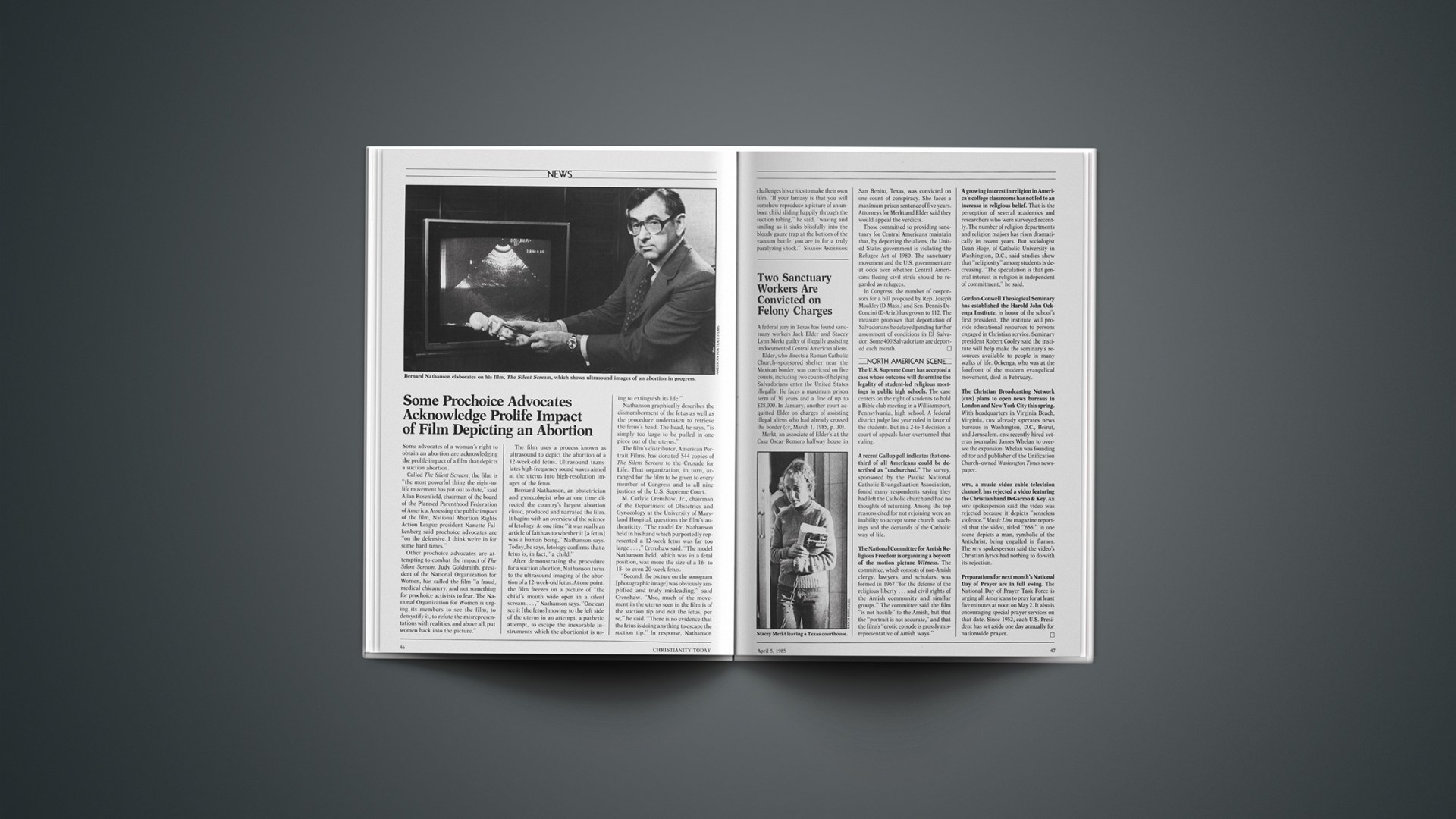Some advocates of a woman’s right to obtain an abortion are acknowledging the prolife impact of a film that depicts a suction abortion.
Called The Silent Scream, the film is “the most powerful thing the right-to-life movement has put out to date,” said Allan Rosenfield, chairman of the board of the Planned Parenthood Federation of America. Assessing the public impact of the film, National Abortion Rights Action League president Nanette Falkenberg said prochoice advocates are “on the defensive. I think we’re in for some hard times.”
Other prochoice advocates are attempting to combat the impact of The Silent Scream. Judy Goldsmith, president of the National Organization for Women, has called the film “a fraud, medical chicanery, and not something for prochoice activists to fear. The National Organization for Women is urging its members to see the film, to demystify it, to refute the misrepresentations with realities, and above all, put women back into the picture.”
The film uses a process known as ultrasound to depict the abortion of a 12-week-old fetus. Ultrasound translates high-frequency sound waves aimed at the uterus into high-resolution images of the fetus.
Bernard Nathanson, an obstetrician and gynecologist who at one time directed the country’s largest abortion clinic, produced and narrated the film. It begins with an overview of the science of fetology. At one time “it was really an article of faith as to whether it [a fetus] was a human being,” Nathanson says. Today, he says, fetology confirms that a fetus is, in fact, “a child.”
After demonstrating the procedure for a suction abortion, Nathanson turns to the ultrasound imaging of the abortion of a 12-week-old fetus. At one point, the film freezes on a picture of “the child’s mouth wide open in a silent scream …,” Nathanson says. “One can see it [the fetus] moving to the left side of the uterus in an attempt, a pathetic attempt, to escape the inexorable instruments which the abortionist is using to extinguish its life.”
Nathanson graphically describes the dismemberment of the fetus as well as the procedure undertaken to retrieve the fetus’s head. The head, he says, “is simply too large to be pulled in one piece out of the uterus.”
The film’s distributor, American Portrait Films, has donated 544 copies of The Silent Scream to the Crusade for Life. That organization, in turn, arranged for the film to be given to every member of Congress and to all nine justices of the U.S. Supreme Court.
M. Carlyle Crenshaw, Jr., chairman of the Department of Obstetrics and Gynecology at the University of Maryland Hospital, questions the film’s authenticity. “The model Dr. Nathanson held in his hand which purportedly represented a 12-week fetus was far too large …,” Crenshaw said. “The model Nathanson held, which was in a fetal position, was more the size of a 16-to 18-to even 20-week fetus.”
“Second, the picture on the sonogram [photographic image] was obviously amplified and truly misleading,” said Crenshaw. “Also, much of the movement in the uterus seen in the film is of the suction tip and not the fetus, per se,” he said. “There is no evidence that the fetus is doing anything to escape the suction tip.” In response, Nathanson challenges his critics to make their own film. “If your fantasy is that you will somehow reproduce a picture of an unborn child sliding happily through the suction tubing,” he said, “waving and smiling as it sinks blissfully into the bloody gauze trap at the bottom of the vacuum bottle, you are in for a truly paralyzing shock.”










